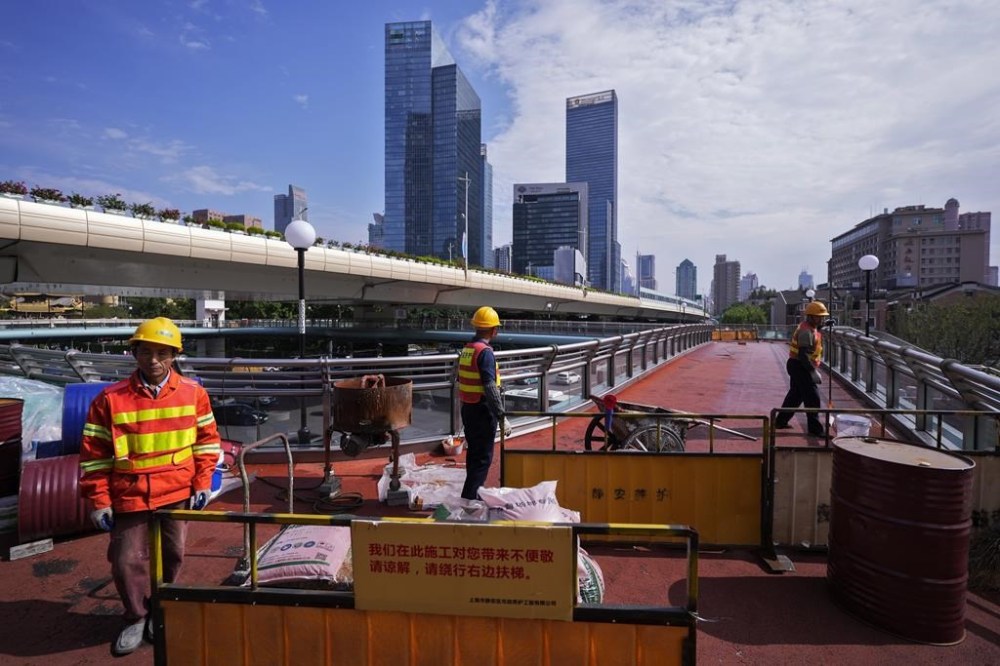China raises its estimate for the size of its economy in 2023
Advertisement
Read this article for free:
or
Already have an account? Log in here »
To continue reading, please subscribe:
Monthly Digital Subscription
$0 for the first 4 weeks*
- Enjoy unlimited reading on winnipegfreepress.com
- Read the E-Edition, our digital replica newspaper
- Access News Break, our award-winning app
- Play interactive puzzles
*No charge for 4 weeks then price increases to the regular rate of $19.00 plus GST every four weeks. Offer available to new and qualified returning subscribers only. Cancel any time.
Monthly Digital Subscription
$4.75/week*
- Enjoy unlimited reading on winnipegfreepress.com
- Read the E-Edition, our digital replica newspaper
- Access News Break, our award-winning app
- Play interactive puzzles
*Billed as $19 plus GST every four weeks. Cancel any time.
To continue reading, please subscribe:
Add Free Press access to your Brandon Sun subscription for only an additional
$1 for the first 4 weeks*
*Your next subscription payment will increase by $1.00 and you will be charged $16.99 plus GST for four weeks. After four weeks, your payment will increase to $23.99 plus GST every four weeks.
Read unlimited articles for free today:
or
Already have an account? Log in here »
Hey there, time traveller!
This article was published 26/12/2024 (345 days ago), so information in it may no longer be current.
BANGKOK (AP) — China’s economy grew a bit more in 2023 than earlier thought, but the revision has not affected forecasts for “about 5%” growth in the GDP this year, the government said Thursday.
The estimate for total economic activity, or GDP, in 2023 for the world’s second largest economy was increased by about 2.7% to 129.4 trillion yuan ($17.7 trillion), based on an economic census conducted once every five years. Earlier this year, the government said the GDP in 2023 was 126.06 trillion yuan.
The exact impact on China’s annual economic growth in 2023 was not given. Officials said further details would be released later. The economy grew at a 5.2% annual pace in 2023, according to the earlier estimate, up from 3% in 2022.

The size of the U.S. economy in 2023 was $27.36 trillion.
The economic census included years when the COVID-19 pandemic was causing severe disruptions to business activity, travel and ordinary activities in China. The economy is still recovering from those shocks and from a severe downturn in the housing market that followed a crackdown on excessive borrowing by property developers.
The government has stepped up measures to counter the slowdown in consumer spending and business investment, pledging again this week to step up spending and issue more bonds to finance support from local governments that are suffering partly due to the property crisis.
Such efforts are helping, the World Bank said in a report Thursday. It lifted its estimate for China’s growth this year to 4.9% from its forecast in June of 4.8%.
The World Bank’s update for China’s annual growth next year was raised to 4.5% from an earlier 4.1%, but it still shows growth slowing in coming years. The forecast for 2026 is for the economy to expand at a 4% pace.
Weakness in the property sector remains a drag on growth, and people whose houses have lost value will remain reluctant to spend much. That will keep inflation low, the report said, at 0.4% for this year, rising to 1.1% in 2025.
It noted that while moves to boost demand by cutting mortgage down payments and interest rates, funding affordable housing projects and subsidizing recycling programs for cars and appliances are supporting demand, such measures won’t do enough to restore growth to higher levels.
The risk of higher tariffs on Chinese exports to the U.S. once President-elect Donald Trump takes office and other limits on trade are other potential threats to the economy given China’s growing reliance on exports to help drive growth.
The World Bank reiterated its calls for China to improve its social safety net and to help redress widening inequality to help provide a firmer economic footing for the hundreds of millions of its people who are either low income or part of what it calls the “vulnerable middle class,” and are at risk of falling back into poverty.

